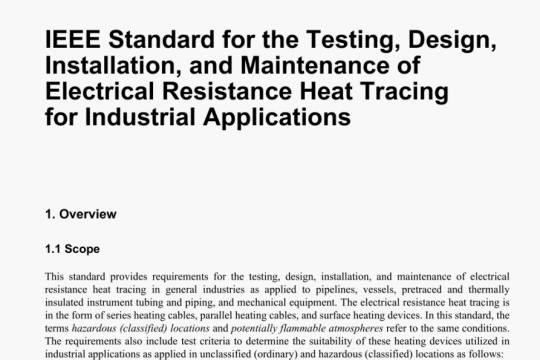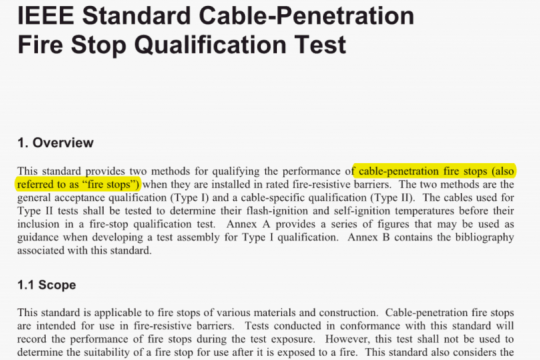IEEE C57.156-2016 pdf free
IEEE C57.156-2016 pdf free.IEEE Guide for Tank Rupture Mitigation of Liquid-Immersed Power Transformers and Reactors.
For standard application low-voltage rectangular tank transformers, there are several design techniques that cati improve the strength of the tank and move the point of rupture to a location that will minimize the loss of insulating fluid. Tank ruptures usually initiate at a welded joint with the crack travelling along the weld and sometimes progressing into the tank plate material.
Typically the weakest point on a transformer tank is where the main cover is welded to the tank wall flange. Rupture pressure may force the cover upward and the walls outward such that the weld is overstressed, with possible formation of a crack.
Other vulnerable points are the tank wall corner welds, tank wall to base plate welds, high stress points in the tank walls usually at throats and penetrations, and welds at the ends of stiffeners.
The main tank cover (whether bolted or welded) should be designed to help ensure that the predicted failure point will be on top of the transfornwr to minimize the loss of insulating fluid in the case of a rupture.
4.2.2 Common design techniques
Common design techniques include the following:
a) Strengthening the tank corners through reinforcements or by eliminating the vulnerable corner T weld.
A common reinforcing method is to add a diagonal gusset plate along the entire length of the internal
corners of the side wall to end wall joints. Another method is to eliminate the corner T weld by using
90° formed corners such that the side wall to end wall weld joint is remote from the tank corner.
b) Strengthening the tank wall to bottom joint using the same diagonal gusset design as in the wall corners.
c) Strengthening throats and wall penetrations using reinforcing angles or gusset plates.
d) Reinforcing the weld joints at the ends of stiffeners by adding plates that spread the end reaction loads. Another method is to add reinforcing plates that connect the stiffener to a structure on the adjacent wall.
4.2.3 Other design techniques
In critical transformers where the magnitude of the arc energy is a concern, other design techniques have been used to improve both the rupture resistance amid reduce the potential of insulating fluid loss. Those techniques include the following:
a) Multiple reliefdevices located on the tank walls near the areas of potential failure ofihe active part improve the likelihood that the reliefdevice would function before the tank is overstressed, An insulating fluid capture system at the pressure relief devices helps minimize insulating fluid loss. Such devices should possess a significantly large outlet area in order to permit a rapid and large expulsion of insulating fluid and gas. Their efficiency niay he lessened if the fault actually occurs at a location other than the one expected near the devices.
b) Design tanks to be more flexible while retaining strength locally at stress concentration points. The increased deformation capability has the benefit of reducing the magnitude of the pressure rise by allowing the tank io absorb some of the fault energy. This, in turn, may also give more time for the pressure relief devices to operate eflixtivcly.
c) The weld joint reinforcement methods of the standard application transformcrs along with external C-shaped structural reintkwcements may also be installed around the tank to cover weld area for the purpose of strengthening that joint.
d) Conservators tend to be undamaged when tanks are ruptured. However, insulating fluid flowing back from the conservator into a ruptured tank can be controlled by installing a shutter or a flow-rate-dependent check valve in the conservator piping. Even though conservators contain a small percentage of the total insulating fluid, the continuous back flow can prolong an active fire for a significant period after insulating fluid from the main tank has ceased to flow.IEEE C57.156 pdf download.




